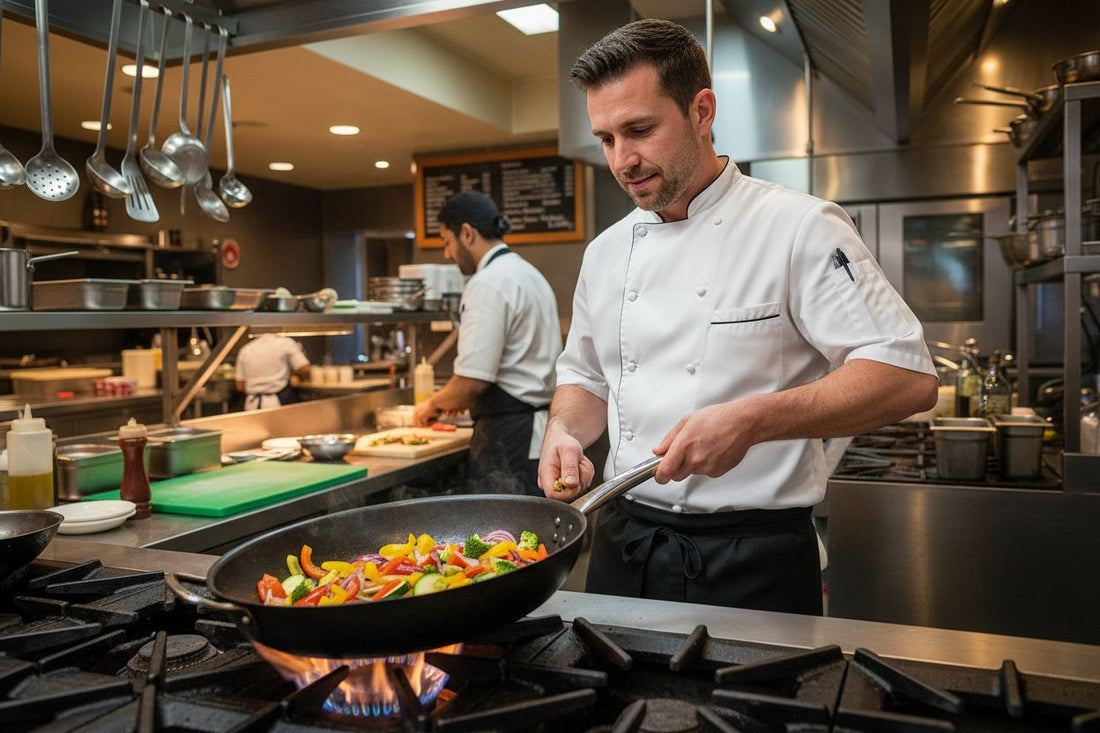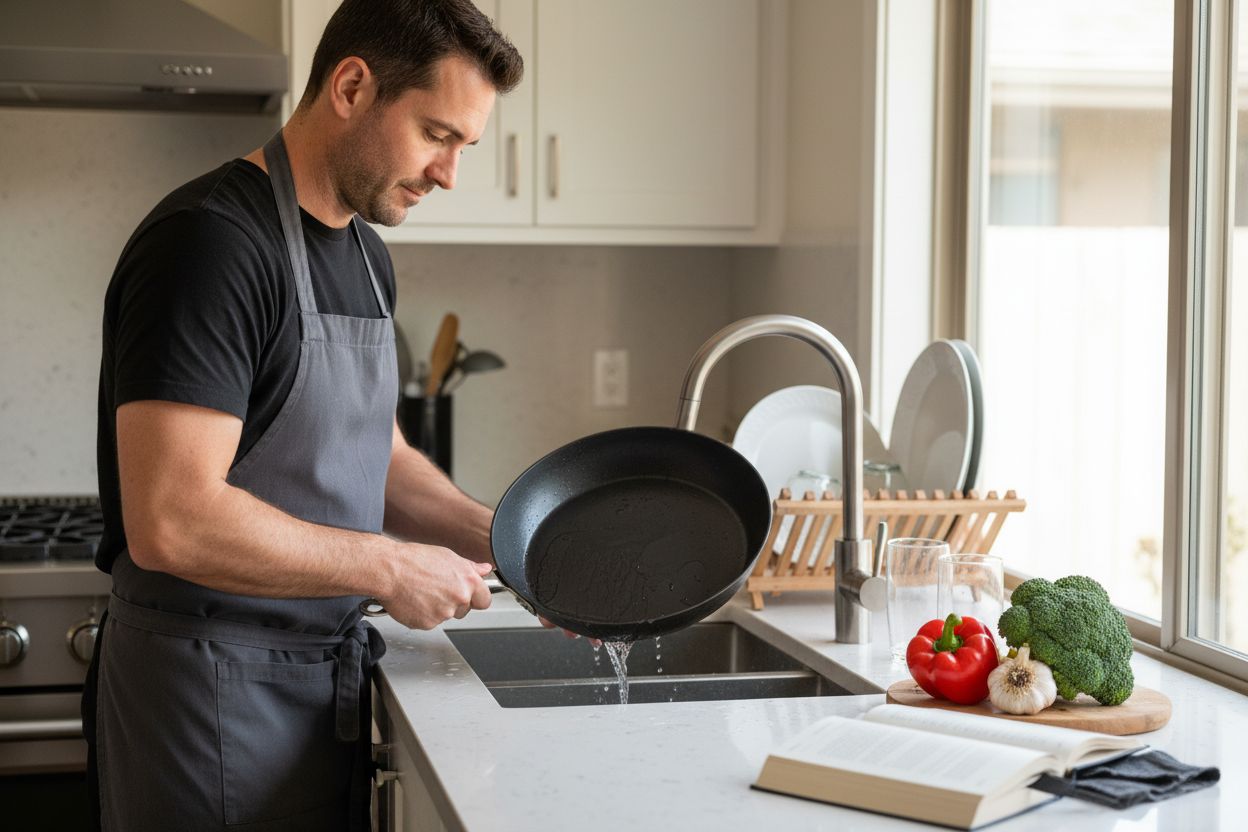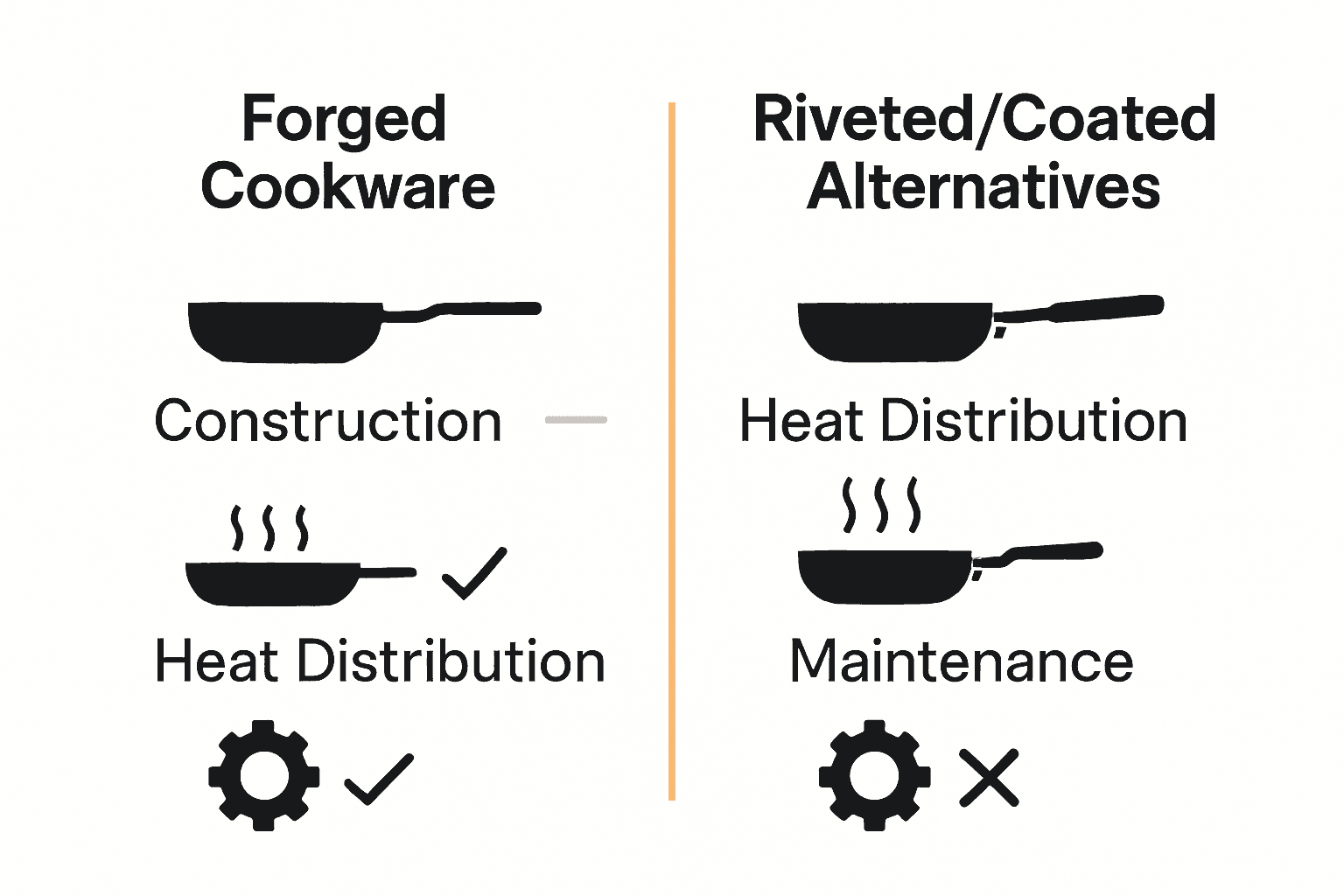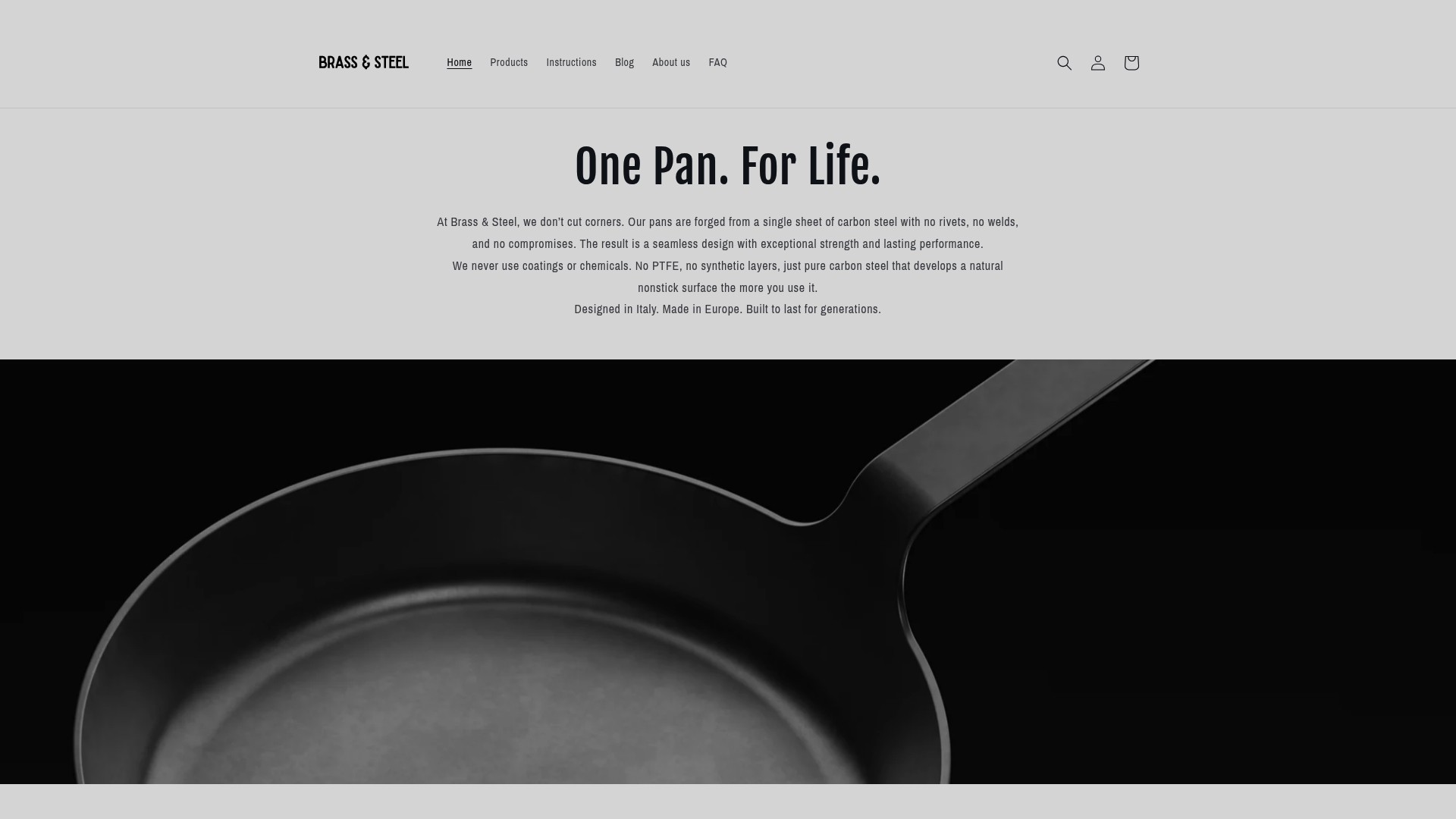
Forged Cookware Benefits: Complete Guide for Cooks
Share
Did you know that forged cookware can last for generations without warping or failing? Many home chefs and professionals choose these pans because they deliver unmatched strength and even heat. Forged cookware is not just about durability. It provides a seamless design that makes both cooking and cleanup easier. If you want cookware trusted by top chefs for its performance and reliability, understanding what forged cookware is and how it’s made can help you make a smarter choice for your kitchen.
Key Takeaways
| Point | Details |
|---|---|
| Forged Cookware | Represents advanced metalworking, offering a seamless, robust design that surpasses traditional cookware in durability and performance. |
| Single-Piece Construction | Eliminates weak points found in riveted pans, ensuring superior heat distribution and easier maintenance. |
| Natural Nonstick Properties | Developed through a seasoning process, providing a safe, chemical-free cooking surface that improves with use. |
| Health & Safety Advantages | Free from harmful synthetic coatings, forged cookware offers a safer cooking alternative while maintaining high performance. |
Table of Contents
- What Forged Cookware Is And How It’s Made
- Key Benefits Of Single-Piece Forged Construction
- Natural Nonstick Patina And Cooking Performance
- Health And Safety Advantages Of Forged Cookware
- Forged Cookware Vs Riveted And Coated Alternatives
What Forged Cookware Is and How It’s Made
Forged cookware represents a pinnacle of metalworking craftsmanship, transforming raw metal into precision cooking tools through an ancient yet sophisticated manufacturing process. Forging is a metalworking technique where intense compressive forces shape metal into a singular, robust piece without creating multiple welded components. According to Wikipedia’s definition of forging, this method has been used for centuries to create incredibly strong metal objects.
The forging process involves applying tremendous pressure to reshape metal, which can occur at different temperatures:
- Hot forging: Metal is heated above its recrystallisation temperature
- Warm forging: Metal is heated but below recrystallisation point
- Cold forging: Metal is shaped at room temperature
For carbon steel cookware, manufacturers like Brass & Steel use precision engineering to transform flat metal sheets into seamless, incredibly durable pans. The single-piece construction eliminates weak points like rivets or welds, resulting in cookware that can withstand high temperatures and provide exceptional heat distribution. Read more about our forging techniques.
When you choose forged cookware, you are selecting a product crafted with generations of metalworking knowledge. These pans represent more than just cooking tools—they are functional pieces of engineering art that transform how professional chefs and home cooks approach their culinary craft.
Key Benefits of Single-Piece Forged Construction
Single-piece forged construction represents a quantum leap in cookware engineering, delivering performance and durability that traditional multi-piece pans simply cannot match. By creating cookware from one continuous piece of metal, manufacturers eliminate structural weak points that can compromise cooking performance and longevity.
The key advantages of single-piece forged construction include:
- Superior Structural Integrity: No welding or riveting means no potential failure points
- Seamless Heat Distribution: One continuous metal sheet ensures even temperature across the entire cooking surface
- Enhanced Durability: Reduced mechanical stress points increase the pan’s overall strength
- Easier Maintenance: Smooth, uninterrupted surface makes cleaning significantly simpler

Professional chefs appreciate single-piece construction because it provides exceptional thermal conductivity and remarkable mechanical resilience. Learn more about professional cookware techniques and how precise engineering transforms cooking experiences. The seamless design means heat transfers more efficiently, allowing for more precise temperature control and consistently excellent cooking results.
Ultimately, single-piece forged cookware isn’t just a tool—it’s a sophisticated culinary instrument. By eliminating unnecessary joints and seams, these pans represent the pinnacle of metalworking craftsmanship, offering home cooks and professionals alike a cooking experience that combines scientific precision with timeless manufacturing artistry.
Natural Nonstick Patina and Cooking Performance
Seasoning is the magical culinary process that transforms a bare metal pan into a naturally nonstick cooking surface, creating a protective layer that enhances both performance and durability. According to Wikipedia’s definition of seasoning, this technique involves applying and heating oil to create a polymerized layer on metal cookware, particularly in carbon steel and cast iron pieces.
The seasoning process develops through repeated cooking, where high-heat oils bond with the metal surface to create a slick, protective coating. Key characteristics of a well-seasoned pan include:
- Natural protection against rust and corrosion
- Improved nonstick properties without synthetic coatings
- Enhanced flavor development from accumulated seasoning layers
- Increased pan durability and longevity
As noted by Independent Ironware, carbon steel pans hand-forged in a single piece develop an exceptional nonstick surface through careful seasoning with high-heat oils. Learn more about developing the perfect patina and how each cooking session contributes to building your pan’s unique cooking character.
Professional chefs appreciate that a well-seasoned pan becomes more nonstick with every meal, creating a cooking surface that improves with age. Unlike synthetic nonstick coatings that degrade, a natural patina actually becomes more effective and resilient, making it a superior choice for serious home cooks and culinary professionals who demand exceptional performance from their cookware.
Health and Safety Advantages of Forged Cookware
Forged cookware offers significant health and safety advantages that set it apart from traditional mass-produced cooking implements. Unlike conventional pans with synthetic coatings that can degrade and potentially release harmful chemicals, single-piece forged cookware provides a natural, non-toxic cooking surface that prioritizes both culinary performance and user safety.
Key health advantages of forged cookware include:
- Chemical-Free Cooking: No synthetic nonstick coatings like PTFE or PFOA
- Minimal Metal Leaching: Single-piece construction reduces potential metal contamination
- Natural Seasoning Process: Creates a protective layer without artificial additives
- High-Temperature Stability: Maintains integrity without releasing toxic compounds
Explore our comprehensive guide on safe cooking techniques and understand how professional-grade forged cookware represents a healthier alternative to traditional nonstick pans. The natural seasoning process not only enhances cooking performance but also creates a protective barrier that prevents direct metal contact with food.
Professional chefs and health-conscious home cooks increasingly recognize forged cookware as a superior choice. By eliminating potential sources of chemical contamination and providing a durable, naturally nonstick surface, these pans represent a significant advancement in cooking technology—offering peace of mind alongside exceptional culinary results.
Forged Cookware vs. Riveted and Coated Alternatives
Structural integrity defines the fundamental difference between forged cookware and traditional riveted or multi-part alternatives. According to Wikipedia’s insights on forging, single-piece forged cookware eliminates mechanical weak points that typically compromise pan performance and durability.
Key comparative advantages of forged cookware include:
- Seamless Construction: No rivets or welded joints that can collect food debris
- Enhanced Durability: Uniform metal structure without potential failure points
- Superior Heat Distribution: Continuous metal surface ensures even cooking temperature
- Easier Maintenance: Smooth surface makes cleaning significantly more straightforward
Explore our comprehensive guide on cookware materials to understand the nuanced differences between manufacturing techniques. Traditional riveted pans often feature multiple metal pieces joined together, creating potential weak spots and uneven heating zones. In contrast, forged cookware is crafted from a single metal sheet, providing unprecedented structural reliability and consistent cooking performance.
Professional chefs and serious home cooks increasingly recognize that cookware construction matters. Forged cookware represents a significant technological advancement, offering a premium cooking experience that transcends traditional manufacturing limitations. By eliminating unnecessary joints and leveraging precise metalworking techniques, these pans deliver unmatched performance, longevity, and culinary precision.

Here’s a comparison of forged cookware versus riveted and coated alternatives:
| Feature | Forged Cookware | Riveted/Coated Alternatives |
|---|---|---|
| Construction | Single-piece No joints |
Multi-part Riveted/welded |
| Heat Distribution | Even Consistent |
Uneven Hot spots |
| Durability | Extremely robust | Prone to weakness |
| Maintenance | Easy Seamless surface |
Tricky Crevices around rivets |
| Nonstick Performance | Natural seasoning Chemical-free |
Synthetic coatings May degrade |
| Health & Safety | No harmful chemicals | Risk of chemical leaching |
Experience the Difference of Forged Carbon Steel Cookware
Are you tired of pans that warp, lose their nonstick power, or struggle with uneven heat? The article has shown how single-piece forged cookware is the solution for cooks who demand real performance and long-lasting quality. With its seamless construction and natural nonstick patina, forged carbon steel offers the robust durability and effortless cooking experience you have always wanted.
Discover our premium Carbon Steel Collection designed for cooks seeking the benefits explored in this guide.

Make the move today and see how Brass & Steel’s expertly crafted carbon steel pans combine minimalist beauty with exceptional heat control. Browse the full range at Brass & Steel or explore why so many consider us the makers of the best carbon steel pan for kitchens of every size. Upgrade your cooking tools now and enjoy heirloom quality with every meal.
Frequently Asked Questions
What is forged cookware and how is it made?
Forged cookware is made using an ancient metalworking technique where metal is shaped into a robust piece through intense compressive forces. This process can be done at different temperatures—hot, warm, or cold—ensuring a seamless and durable cooking surface.
What are the benefits of single-piece forged construction?
Single-piece forged construction offers superior structural integrity, seamless heat distribution, enhanced durability, and easier maintenance compared to traditional multi-piece cookware, eliminating weak points from rivets or welds.
How does the seasoning process affect the performance of forged cookware?
The seasoning process creates a natural nonstick layer on the cookware by bonding high-heat oils to the metal surface. This protective layer improves cooking performance, offers rust protection, and enhances flavor development while increasing the pan’s longevity.
What health and safety advantages does forged cookware provide?
Forged cookware is chemical-free, with no synthetic nonstick coatings that can degrade and release harmful substances. Its single-piece construction also minimizes metal leaching, making it a safer choice for culinary use.
Recommended
- What is Forged Cookware? Understanding its Benefits and Use – Brass & Steel
- Understanding Forged Cookware Explained for Chefs & Enthusiasts – Brass & Steel
- 10 Essential Items for Your Professional Kitchen Cookware List – Brass & Steel
- 7 Essential Insights on Different Cookware Materials – Brass & Steel